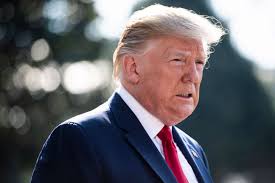Fred Bauer
Less than a month into his independent run for the presidency, Robert F. Kennedy, Jr. shows surprising strength in political polling. That may be a warning sign of the pressure the US political system is under – and the deep frustration of the American electorate.
Where Kennedy stands in the polls remains somewhat unclear. A Susquehanna poll gives him 6 per cent in a three-way race with President Joe Biden and former president Donald Trump. Most other outlets place him in the double digits. A USA Today poll put him at 13 per cent. Quinnipiac had him at 22 per cent, which is not that far from Biden at 39 per cent and Trump at 36 per cent. These polling numbers suggest the alienation a Trump-Biden rematch would provoke in many voters. Public-opinion aggregators show the two men with near-identical unpopularity: around 40 per cent approval rating, with a disapproval rating in the mid-50s. Numerous polls have indicated that many voters would like to pull the lever for someone other than Trump or Biden.
A Biden-allied pollster even coined the term of a “No-No voter” – someone who dislikes both Trump and Biden – to describe a crucial, disappointed swing bloc. No-No voters helped tip the scales in 2016, and they might play a similar role in 2024. The unpopularity of both men has not necessarily deterred the establishments of either party. Democratic powerbrokers have almost uniformly stood by Biden, and many key Republican officials have backed Trump – with some even calling for an end to the Republican primary. At once an outsider and a scion of political royalty, Kennedy may appeal to voters dissatisfied with a Biden-Trump status quo. Many Trump allies boosted Kennedy during his failed primary challenge to Biden earlier this year, but this effort may have boomeranged now that Kennedy has gone independent. Electoral polling in the United States has grown harder in recent years, so any data should be taken with a grain of salt. Still, multiple polls have shown that Kennedy may draw more from Trump’s pool of support than Biden’s.
Quinnipiac gave Biden a one-point edge (47 per cent to 46 per cent) in a head-to-head with Trump. When Kennedy was included, this grew to a three-point Biden lead. In USA Today’s poll, Kennedy voters said by a 2-1 margin that they would vote for Trump over Biden if Kennedy were not on the ballot. Kennedy’s campaign seems designed to appeal to the populist, “radical middle” voters who have been at the heart of Trump’s coalition. Echoing the way that Trump zig-zags across conventional ideological categories, Kennedy’s campaign website calls for more border security, a minimum-wage boost, the withdrawal of American armed forces abroad, the defence of free speech, new environmental policies, and efforts to tackle the cost of housing.
Just as Trump pits himself against the “deep state,” Kennedy portrays the federal government as captured by corporate interests and in need of a fundamental shakeup. On some of these issues, Kennedy may even be able to outflank Trump among the very alienated: he assails the “Covid lockdowns” that characterised Trump’s last year in office, and Kennedy is a well-known skeptic of many vaccines. Illustrating his appeal to voters anxious for something new, a recent analysis by Politico found that many of Kennedy’s donors had not previously donated to a presidential campaign in recent years. How all this will cash out in November 2024 remains unknown. Third-party candidates tend to fall to earth as Election Day draws near. Once they kick the tires of his candidacy, discontented voters may decide that he’s not what they are looking for. A central political challenge facing Kennedy is ballot access.
If his campaign can’t clear the managerial hurdles of getting him on the ballot across the United States (especially in swing states), support for his candidacy will not necessarily translate into electoral consequences. Other third-party candidates more identified with the left, such as Cornel West, could compensate for any votes Kennedy might take from Trump. Since the Second World War, third-party presidential candidates often do best during times of transition and great uncertainty. In 1968, George Wallace racked up 13 per cent of the vote amid the maelstrom of the 1960s and the Vietnam War. After years of stagflation, John B. Anderson mustered 6 per cent of the vote in 1980. Ross Perot’s 1992 third-party campaign represented the shattering of the electoral coalition that had given Republicans a near-lock on the presidency for decades; inveighing against NAFTA and other global trade agreements, Perot also anticipated the populist disruption that would consume American politics twenty years later. The 2024 election is a year away, but RFK’s poll numbers may indicate similar discontent today.
The Telegraph







